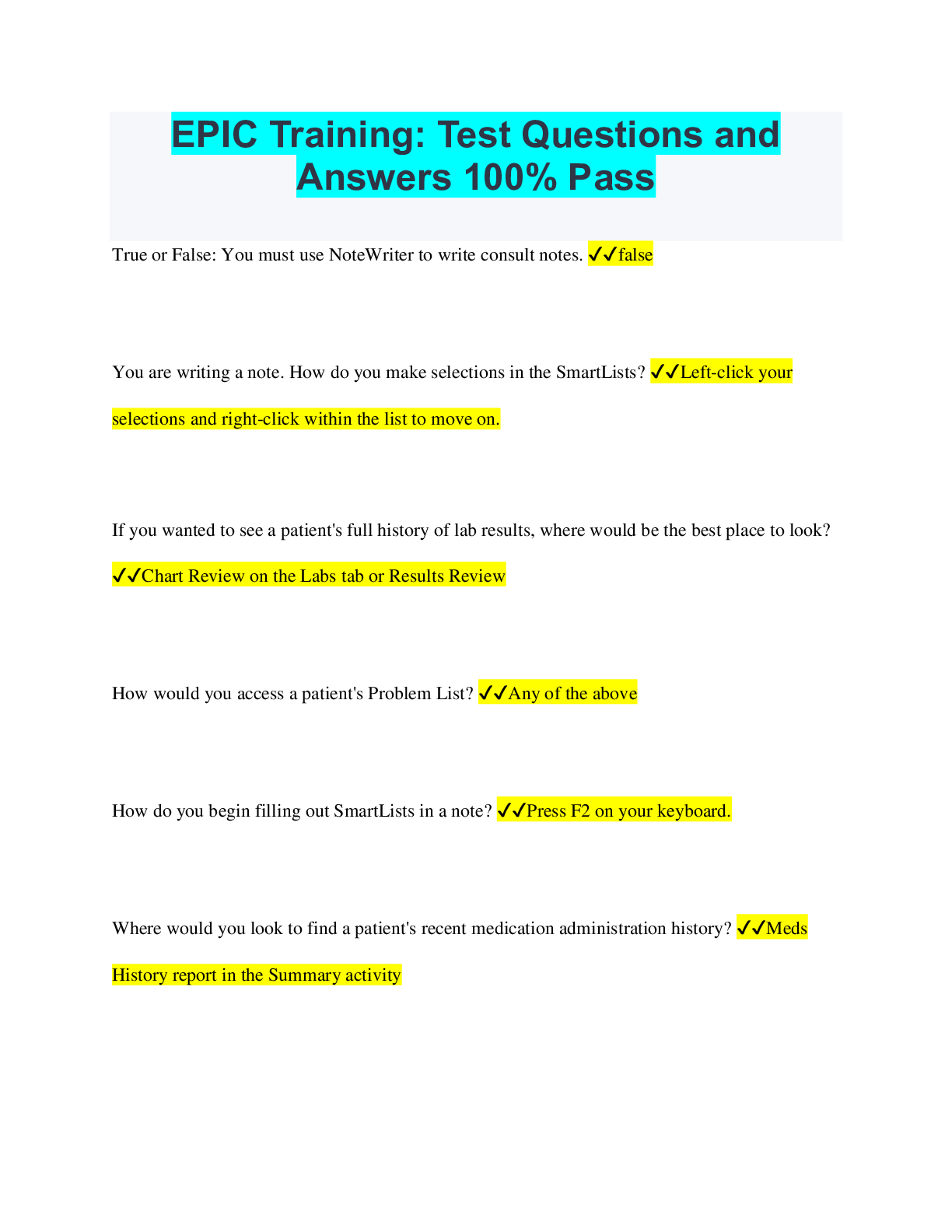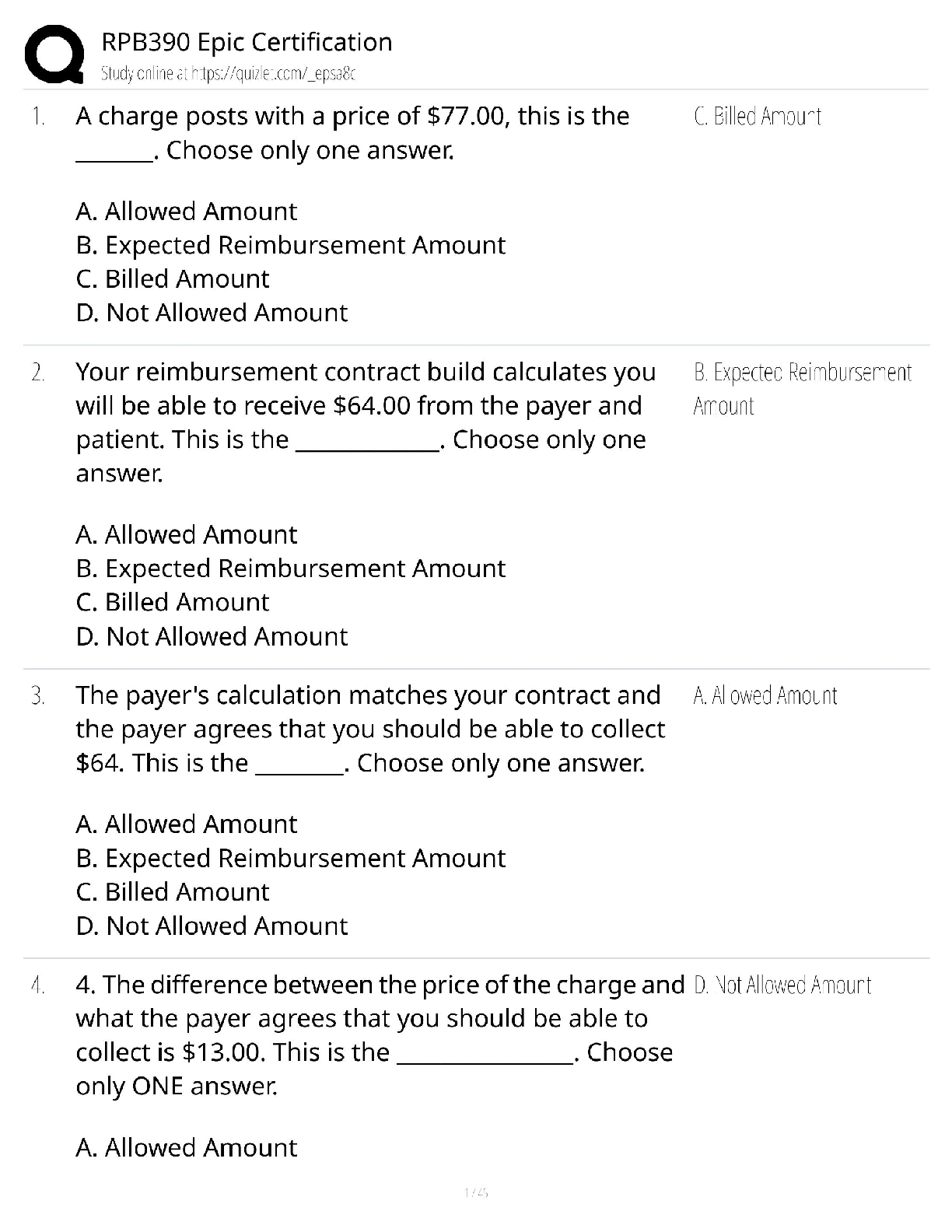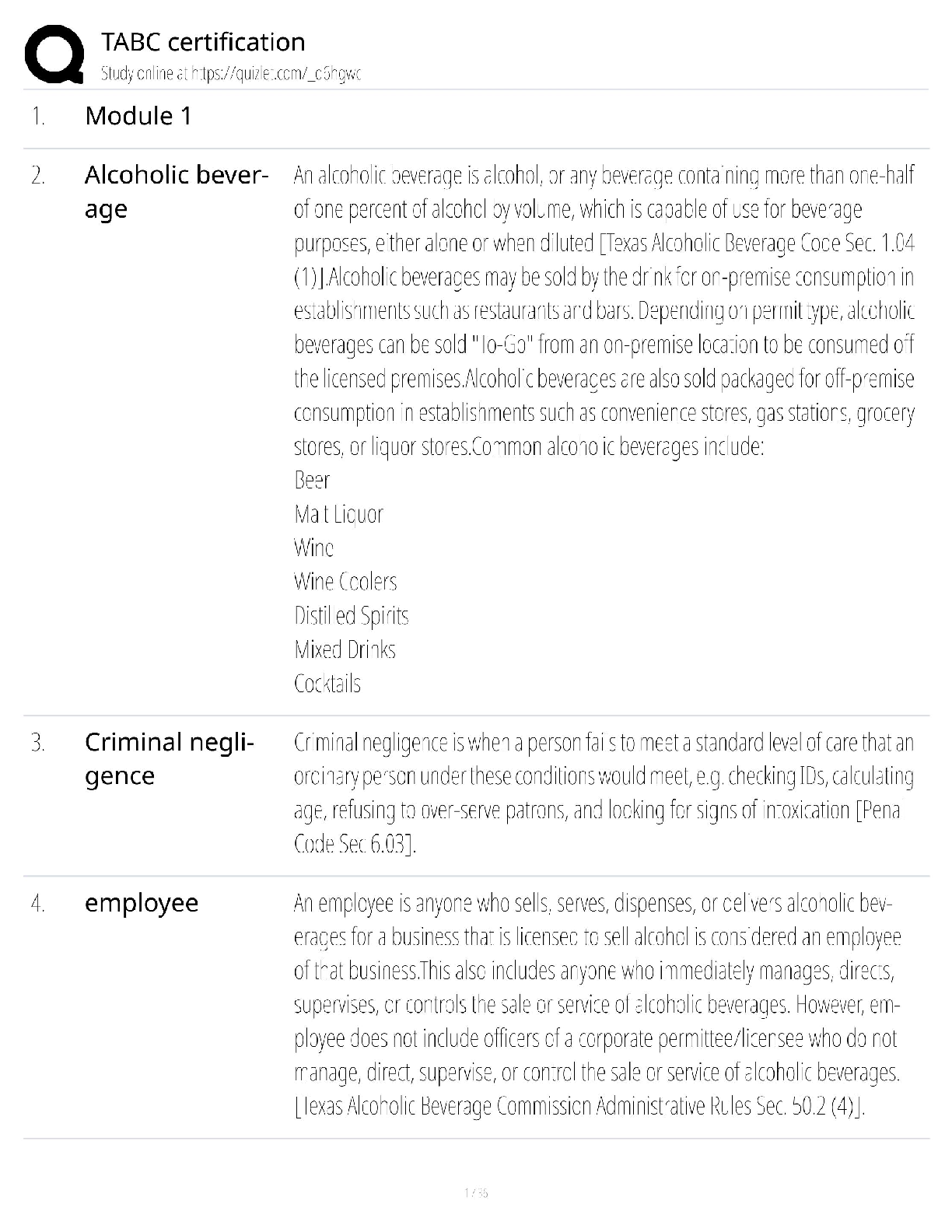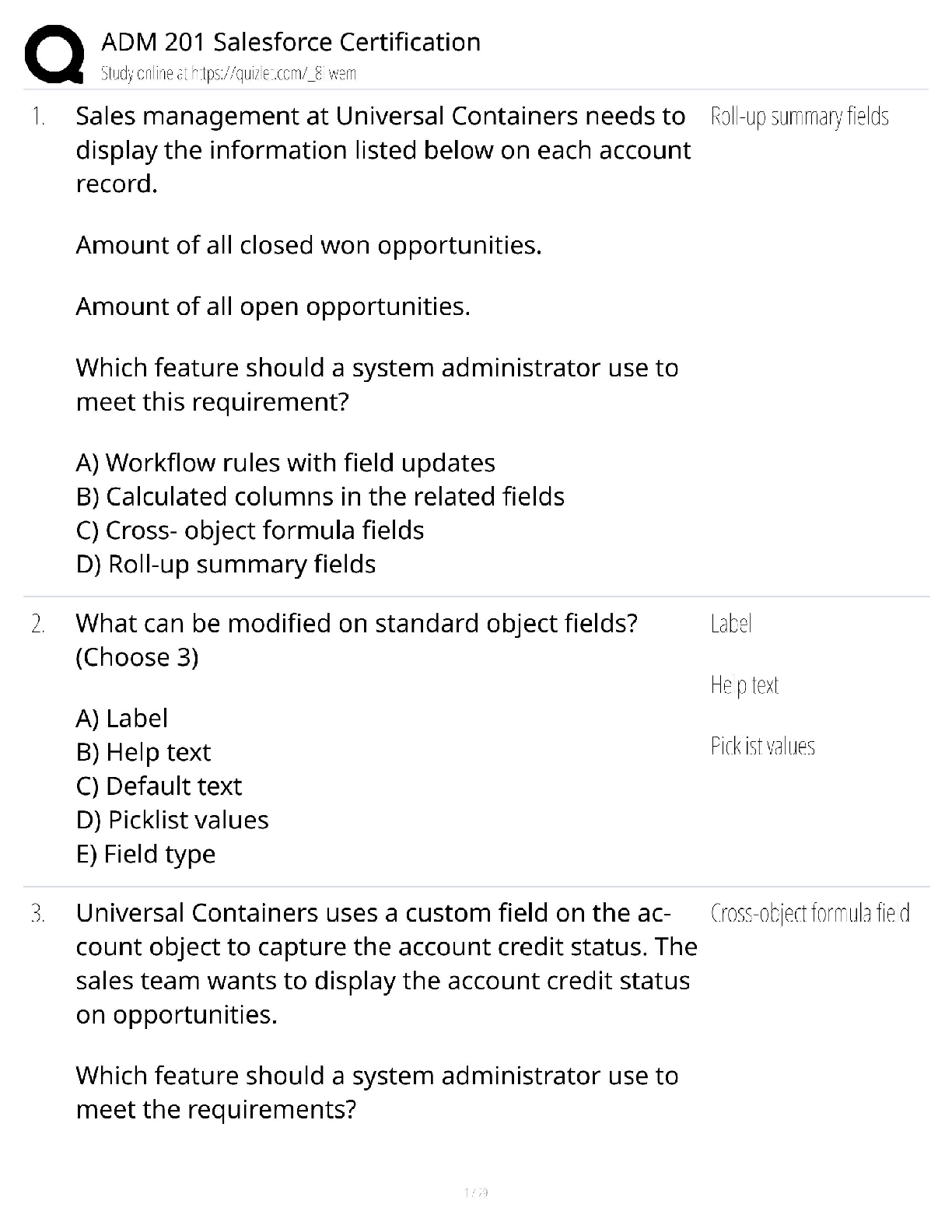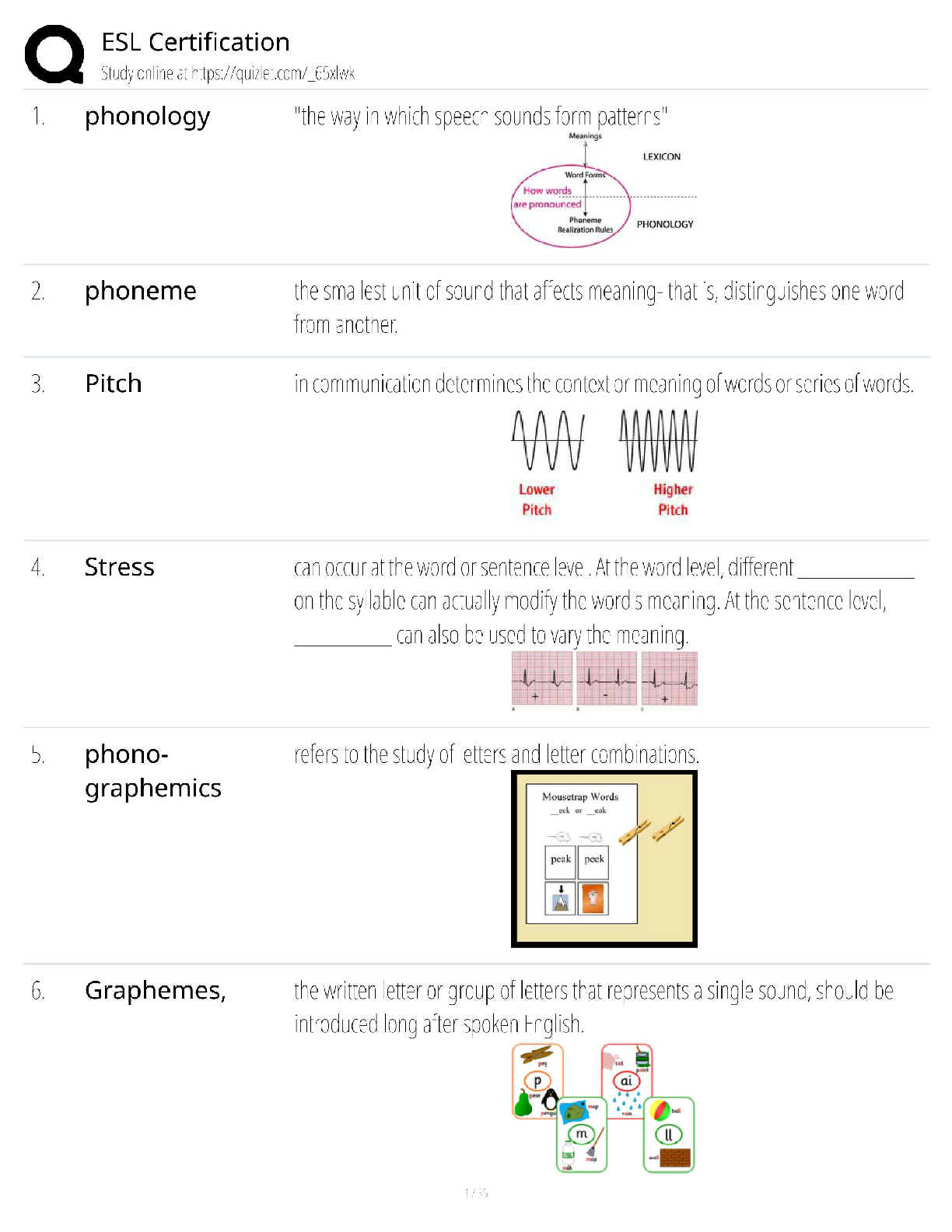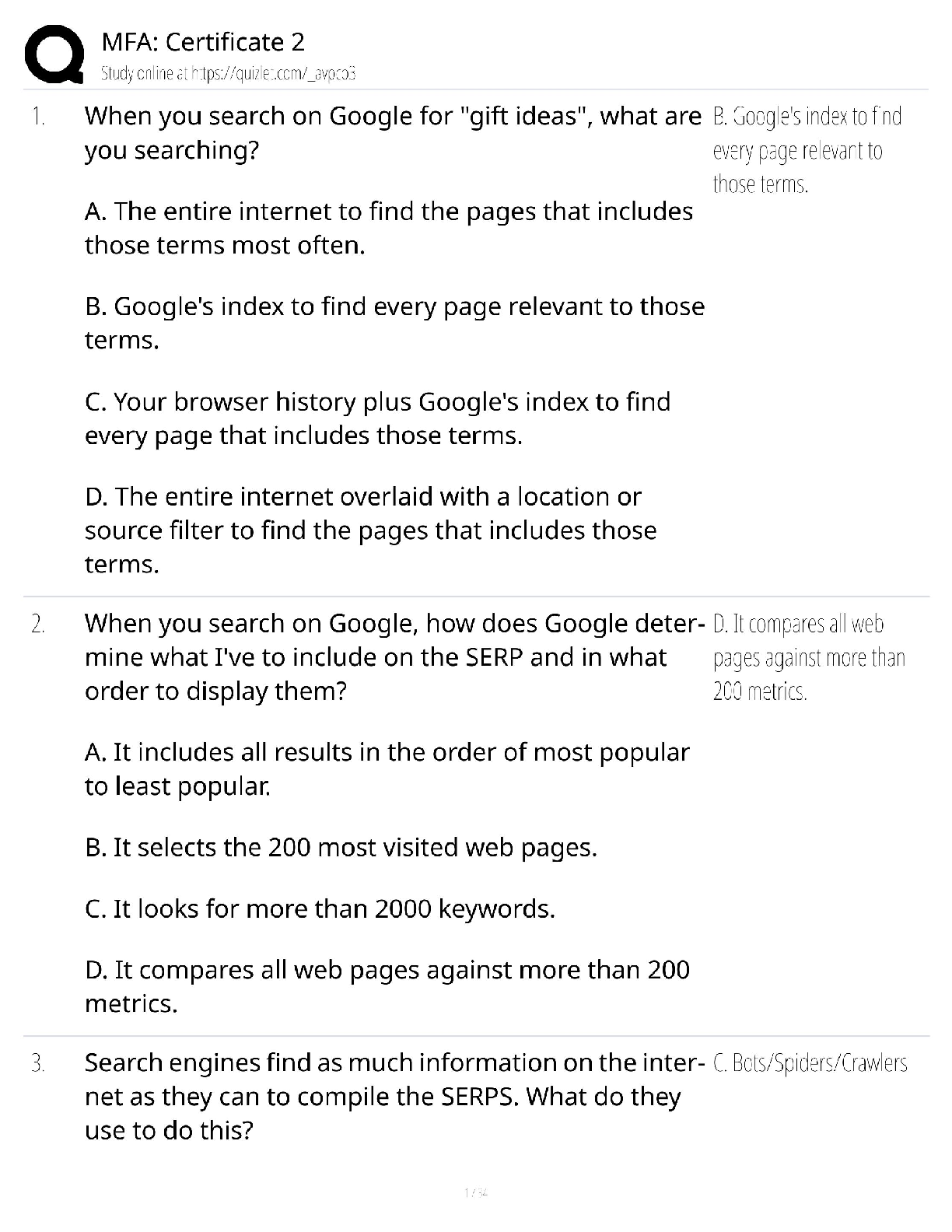Medicine > QUESTIONS & ANSWERS > EMT Exam 1 Review Questions and Answers with Verified Solutions (All)
EMT Exam 1 Review Questions and Answers with Verified Solutions
Document Content and Description Below
EMT Exam 1 Review Questions and Answers with Verified Solutions During the scene size-up, you should routinely determine all of the following, EXCEPT: A) the mechanism of injury or nature of illnes ... s. B) the ratio of pediatric patients to adult patients. C) whether or not additional resources are needed. D) if there are any hazards that will jeopardize safety. ✔✔Answer: B Rationale: Components of the scene size-up—after taking standard precautions—include determining if the scene is safe for entry, determining the mechanism of injury or nature of illness, determining the number of patients, and determining if additional resources are needed at the scene. You arrive at the scene of an "injured person." As you exit the ambulance, you see a man lying on the front porch of his house. He appears to have been shot in the head and is lying in a pool of blood. You should: A) immediately assess the patient. B) proceed to the patient with caution. C) quickly assess the scene for a gun. D) retreat to a safe place and wait for law enforcement to arrive. ✔✔Answer: D Rationale: Your primary responsibility as an EMT is to protect yourself. Prior to entering any scene, you must assess for potential dangers. In cases where violence has occurred, you must retreat to a safe place and wait for law enforcement personnel to arrive. Findings such as inadequate breathing or an altered level of consciousness should be identified in the: A) primary assessment. B) focused assessment. C) secondary assessment. D) reassessment. ✔✔Answer: A Rationale: The purpose of the primary assessment is to identify and manage any life threats to the patient, such as inadequate breathing, an altered level of consciousness, or severe hemorrhage. Which of the following would you NOT detect while determining your initial general impression of a patient? A) Cyanosis B) Gurgling respirations C) Severe bleeding D) Rapid heart rate ✔✔Answer: D Rationale: The initial general impression is what you first notice as you approach the patient, but before physical contact with the patient is made. It is what you see, hear, or smell. A rapid heart rate (tachycardia) would not be detected until you actually perform the entire primary assessment; you cannot see, hear, or smell tachycardia. Your primary assessment of an elderly woman who fell reveals an altered level of consciousness and a large hematoma to her forehead. After protecting her [Show More]
Last updated: 2 years ago
Preview 1 out of 29 pages
.png)
Buy this document to get the full access instantly
Instant Download Access after purchase
Buy NowInstant download
We Accept:

Also available in bundle (1)
Click Below to Access Bundle(s)
.png)
NREMT BUNDLED EXAMS QUESTIONS AND ANSWERS WITH COMPLETE SOLUTIONS
NREMT BUNDLED EXAMS QUESTIONS AND ANSWERS WITH COMPLETE SOLUTIONS
By Nutmegs 2 years ago
$77
33
Reviews( 0 )
$10.00
Can't find what you want? Try our AI powered Search
Document information
Connected school, study & course
About the document
Uploaded On
Jan 20, 2023
Number of pages
29
Written in
All
Additional information
This document has been written for:
Uploaded
Jan 20, 2023
Downloads
0
Views
166





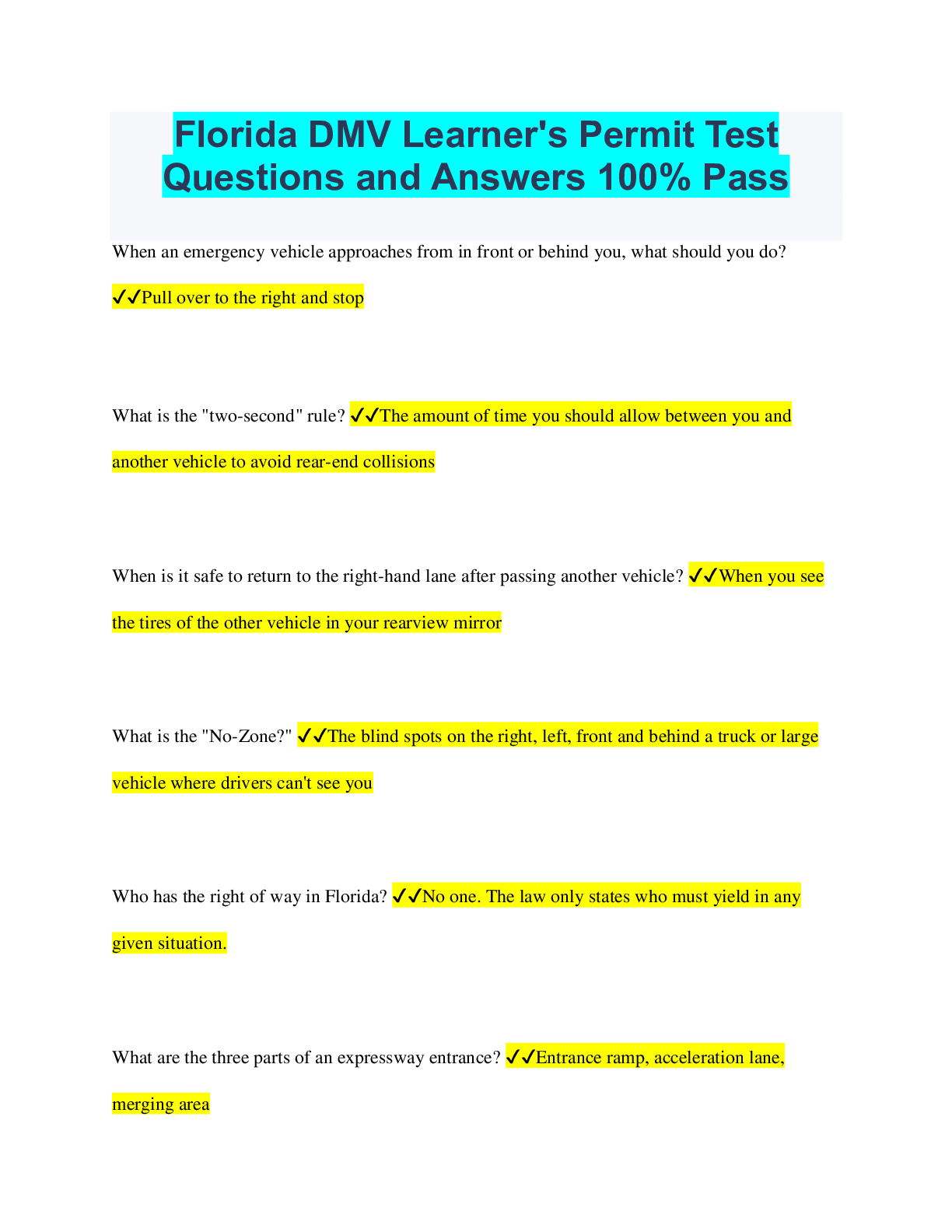
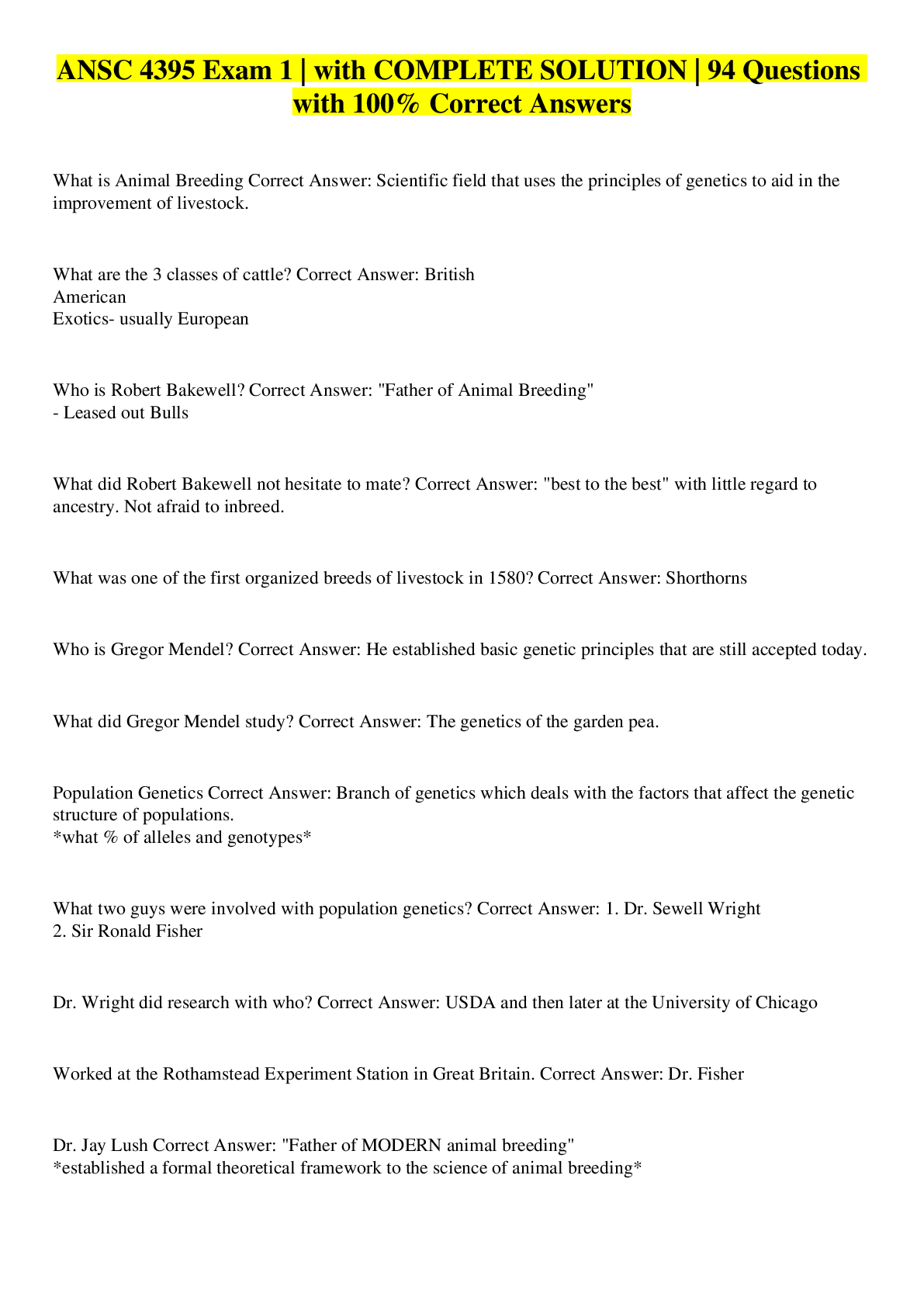

.png)


